Case Studies.
Add Case Study
Our Case Study database tracks 22,657 case studies in the global enterprise technology ecosystem.
Filters allow you to explore case studies quickly and efficiently.
Download Excel
Filters
-
(407)
- (253)
- (84)
- (60)
- View all
-
(324)
- (201)
- (103)
- (25)
- View all
-
(265)
- (139)
- (39)
- (31)
- View all
-
(263)
- (120)
- (84)
- (74)
- View all
-
(251)
- (212)
- (70)
- (32)
- View all
- View all 13 Technologies
- (159)
- (114)
- (103)
- (101)
- (98)
- View all 42 Industries
- (1,315)
- (322)
- (154)
- (138)
- (124)
- View all 13 Functional Areas
- (558)
- (433)
- (294)
- (182)
- (153)
- View all 71 Use Cases
- (915)
- (405)
- (380)
- (231)
- (78)
- View all 8 Services
- (64)
- (64)
- (64)
- (51)
- (44)
- View all 191 Suppliers
Selected Filters
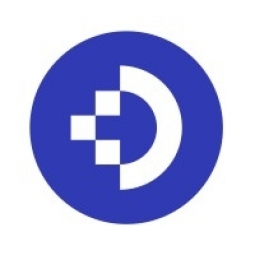
|
LKH Feldkirch Regional Hospital
The healthcare system has reached an impasse with vanishing government support, escalating costs, aging demographics, and the expense of keeping up with medical progress. This has forced everyone working in the field to find innovative new ways to improve workflow processes. Feldkirch Regional Hospital in Vorarlberg, Austria, recognized early on the need for modern IT systems. By 1995 they had already implemented the Patidok electronic Healthcare Information Management System (HIMS). However, maximum efficiency is only reached with a HIS when paper-based documents are fully integrated into the electronic information flow. Therefore, they decided in 2002 to completely convert to electronic patient files. A basic requirement of this was the addition of an electronic archive.
|
|
|
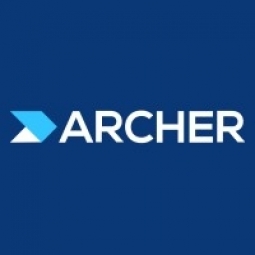
|
Eastern Bank Uses Archer® to Drive Business Processes and Streamline Compliance
As Eastern Bank's assets approached the ten billion dollar mark, the bank initiated a strategic focus on risk management and regulatory compliance. The bank needed a solution to centrally manage documents and expedite the creation of reports related to the Financial Modernization Act, a law requiring financial institutions to make their information-sharing practices available publicly and safeguard sensitive customer data. The bank also wanted to move away from its previously siloed approach and implement a common, consistent taxonomy across the entire organization.
|
|
|

|
Camunda BPM at Sparta Systems
Sparta Systems, a provider of enterprise quality management solutions (EQMS), was looking for a technology to manage workflows for its next-generation cloud-based products. The company wanted to offer a role with its software that enables business or compliance analysts to create and deploy business processes. While this could have been built internally, Sparta preferred to leverage third-party technology to take advantage of new features and functions without dedicating development resources to the effort. The company evaluated several BPM products, using criteria such as open source/OEM friendly license, wide community adoption, open standards and native support for BPMN 2.0, designer/modeler tooling availability, exposed APIs, embeddability within their application or consumable as a service, database support, scalability and performance, and process versioning.
|
|
|

|
Rawlings Sporting Goods Scores Big with Cloud Document Management
Rawlings Sporting Goods Company, a leading manufacturer and marketer of sporting goods in the United States, was facing challenges in managing custom orders and effectively communicating order information to their vendors. The company needed a solution that could tie custom specifications and artwork back to the original order and share this information with vendors worldwide. The solution also needed to maintain version control and allow document and file sharing with vendors across the globe. The company's customer service team works with clients to create custom products such as apparel, uniforms, sporting equipment and other licensed items. With so much information to manage for each order, it was challenging to keep track of all the details and ensure that the correct information was readily accessible.
|
|
|

|
Making On-Site Work Processes Simple and Efficient
Downer, New Zealand’s leading engineering, infrastructure management and construction services provider, was facing challenges with its on-site work processes. The company's work involves maintaining and renewing vital infrastructure assets, focused on three sectors: transport, utilities and facilities. The company was struggling with manual, paper-based processes that were time-consuming and prone to errors. These processes included permit to dig, automated purchase order, daily job record & timesheets, and photo uploader. The siloed nature of the sites was also an obstacle to data-driven strategies. The company had previously used Microsoft SharePoint, Power Apps and a GIS (Geographic Information System) application with limited success. They needed a solution that could integrate and enhance existing tools and include subcontractors in a variety of public facing processes.
|
|
|

|
Pharmigon's Implementation of DocuWare for GMP-Compliant Quality Management
Pharmigon, a manufacturer of patient-specific and highly specialized preparations for the targeted treatment of tumors, operates in state-of-the-art clean room laboratories. The company is required to adhere to Good Manufacturing Practice (GMP), which necessitates meticulous document processing and archiving. All documentation, including work instructions, forms, and plans, must be version-controlled and subject to a defined life cycle. Additionally, records must be created, archived for a specified period, and protected against tampering or manipulation. The company had been relying on digital document management for several years, but needed a solution that could seamlessly integrate with their existing pharmacy management system.
|
|
|
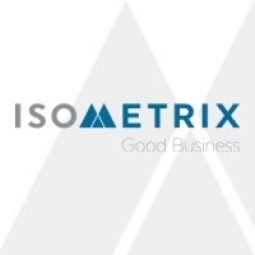
|
How De Beers rolled out a global EHS system across 8 sites
De Beers Group, a global diamond mining company, recognized the need for a software solution to support their 'Building Forever' strategy, which is built on protecting the natural world, partnering for thriving communities, standing with women and girls, and leading ethical practices across the industry. The company had been using IsoMetrix since the late 1990s, but in 2016, they initiated a global strategy to drive sustainability and shared value. They chose IsoMetrix as a software vendor to develop and implement a standardized system for managing Environmental, Health and Safety (EHS) incidents, risk management, and actions across all their business units. This complex project, named 'Project Unity', aimed to standardize reporting requirements across eight individual business units to allow for group reporting. The business units where IsoMetrix has been implemented are in Botswana, Canada, and South Africa.
|
|
|

|
Raytheon Company Case Study
Raytheon Company, a global 500 company in the Aerospace & Defense industry, was facing several challenges. They had a lack of or inefficient one-to-many device provisioning and were exposed to advanced network threats. They had evaluated Cisco before choosing Forcepoint. After using Forcepoint Next Generation Firewall, they had to address new challenges such as new firewall deployment, maintaining policy consistency across firewalls, deploying software updates, and having a unified view of all firewalls.
|
|
|

|
Emerson Process Management Finds and Controls Regulated Data with Forcepoint
Emerson Process Management faced several challenges. The company's policies were too complicated and required too much headcount to maintain them. This led to data exfiltration that left the organization exposed. Furthermore, the company needed to control and manage data that was subject to regulation. The company was in need of a solution that could help them easily find and control regulated data and sensitive IP.
|
|
|

|
Air Force Central Command (AFCENT) Case Study
The Air Force Central Command (AFCENT) was tasked with establishing a new combined air and space operations center (CAOC) to replace a temporary facility that had been in use for six years. The new CAOC needed to provide more robust systems to accommodate users and improve interoperability. It also had to make the best possible use of physical space and reduce power consumption. The transition from the old facility to the new one had to be seamless so as not to interrupt mission operations. The CAOC was controlling air operations in two live theaters at transition time. The project, from planning to implementation, was completed in less than two years. This desktop consolidation project presented other challenges for all parties because AFCENT’s mission requires 24x7 operations with 99.99% availability.
|
|
|

|
Escorts Limited Manufacturing’s Valuable IP is Secured with Forcepoint DLP
Escorts Limited, a leading engineering conglomerate in India, generates a large volume of in-house IP in the form of blueprints and designs for engines, transmissions, and machines like tractors, cranes, backhoe loaders, compactors, and equipment used in railways. This IP required protection. The company also does business with leading manufacturers worldwide, creating even more IP that must be secured. A largely mobile global marketing and sales force required secure access to IP on and off the official network.
|
|
|
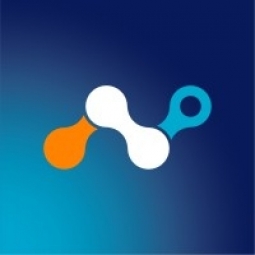
|
AVX Corporation Case Study
AVX Corporation, a leading international manufacturer and supplier of advanced electronic components, was facing several challenges. The company needed visibility and control over data in Google G Suite. They also needed to discover ShadowIT cloud services in the environment, demonstrate compliance with GDPR, and inspect and control cloud traffic even when it originates from a mobile device. As usage of G Suite grew within the company, an increasing amount of data was uploaded, and IT had little to no visibility or control of the data in the cloud. This data included client contracts, employee and customer information, intellectual property, and other confidential records. Prompted by the revelation that they needed a clear picture of risk exposure, information security professional Zack Moody sought a solution to help them discover and gain control over sensitive data across G Suite and to meet growing compliance requirements, including GDPR.
|
|
|

|
How a Leading Automotive Company Embraces “Cloud-First” with the Right Security
The automotive company was facing a renewal of its on-premises web proxy appliance solution. However, the company had adopted a cloud-first strategy and realized that the existing on-premises solution would not meet its future requirements. The company was looking for a solution that would provide full visibility into their environment and strengthen their move toward cloud adoption. The company wanted to deliver IT services faster, reduce MPLS backhauling expenses and appliance maintenance fees, support remote workers with cloud edge security close to the user, add visibility into cloud applications to strengthen overall security, and consolidate cloud and web security into one platform, console, and policy engine.
|
|
|
|
|
ABB Foundry Group Customer Success Story
ABB Foundry Group needed a solution to monitor and control the melting process in their foundries. They required a system that could handle connectivity to multiple devices from a single Windows-based server. The system needed to connect to temperature measurement devices, analyzers, and spectrometers, and offer a variety of operational reports. The system also needed to be quick-to-learn, easy-to-use, controller (PLC) independent, support multiple languages, and work with different unit systems. The system was to be configured to individual foundry requirements and operations.
|
|
|
|
|
Customer Success Story - LUKOIL
LUKOIL, a major international oil and gas company, was planning to build a new datacenter in its Moscow office. The company required an HMI/SCADA system that could provide maximum security and performance of datacenter utility systems while also ensuring high energy efficiency. The datacenter computer rooms were to include over 100 server racks, each designed with a capacity of 17kW of power. The company also required 24/7 control capability for its utility systems. LUKOIL wanted an HMI/SCADA system that could provide estimates for the datacenter rooms’ technological and climatic metrics and could quickly acquire status information for all nodes of power and cooling/air conditioning systems. As the planned datacenter was to include approximately 5,000 data points, LUKOIL sought an HMI/SCADA solution that easily centralizes functional mode management for utility systems.
|
|
|
|
|
Customer Success Story: IDRA Presse S.p.A.
IDRA Presse, a leading producer of Pressure Die Casting Machines, had the requirement of sampling process parameters on their Pressure Die Casting Machines at 10,000 cycles/sec and needed a software system to have the ability to collect real time data at those rates. They used an external sampling system with real time operating software. This system was connected through an Ethernet link with ICONICS software using an OPC Server on a PC, where TrendWorX32 trends the data collected. This data was then sent via a LAN to a centralized database for final evaluation and storage. IDRA selected ICONICS to provide them with state-of-the-art injection press machine monitoring and control after evaluating nine other suppliers including Intellution, Wonderware, WinCC and RSView. IDRA replaced their existing Orsi Cube system with the GENESIS32™ HMI Software suite.
|
|
|
|
|
Customer Success Story: Metal Trade Comax a.s.
Metal Trade Comax a.s., a producer of non-ferrous casting alloys and surface treated metal sheets and bands, needed a comprehensive monitoring and control solution for their production processes. They required a system that could ensure the coated metal exits the production line without defects. The company also wanted to gain interoperability with their devices from different vendors. They were looking for a solution that could interface with their Siemens SIMOTION PLC, which controls the main drives or motors of the production line, and a Siemens Simatic S7-300, connected with industrial ethernet.
|
|
|
|
|
Customer Success Story: PGT Industries
PGT Industries, a leading manufacturer and supplier of residential impact-resistant windows and doors in the U.S., was facing a challenge of demand exceeding production capacity, which was constraining revenue growth. The company had developed a capital plan to expand their manufacturing operations. However, before executing the capital expansion, the Vice President of Operations decided to test the assumptions about current capacity by installing and applying a productivity analysis tool. The company selected ICONICS Productivity Analytics software to analyze the Overall Equipment Effectiveness (OEE) of the current plant. The software’s drilldown and correlation capabilities were used to zero in on sources of loss of OEE, focusing on three OEE factors: availability, quality and performance.
|
|
|
|
|
Customer Success Story: Vitkovice Steel
Vitkovice Steel, a leading European manufacturer of rolled steel products, was faced with the challenge of replacing a production monitoring system from the late 1980’s, in addition to control systems based on obsolete Czechoslovakian computers (PPC-4). The company needed a system that could meet their high availability, 24x7 requirements, as well as scale to the needs of about 180 users. They also needed a system that could integrate seamlessly with existing systems, including KEP Servers, Stratus Servers, Siemens Simatic S7 PLCs, Oracle 9.2 database, UZ line-over databases, stampers in hot or cold conditions (3964R), and paint stampers. The system also needed to connect easily to the company’s existing Microsoft products, including Windows 2003 Server, Windows 2000 and XP clients, Microsoft Office and SQL databases.
|
|
|
|
|
Customer Success Story: Signature S.A.
SIGNATURE S.A., a European leader in road signage and road marking, sought a solution to assist in the automation of its paint plant using a batch process. The company wanted to connect PLCs from different manufacturers to their system, ensure traceability, and enable remote control via production manager and process engineer stations. Additionally, SIGNATURE S.A. wanted to generate daily alarms, event and production data reports, a production report by orders of fabrication (with associated alarms), and a weekly report for total consumption of raw materials used in production.
|
|
|
|
|
Customer Success Story: Animal Health Care Co.
The animal healthcare company, a leading international manufacturer and distributor of animal healthcare products, was in need of an industrial controls solution that would best manage and monitor critical process alarms. The company also planned to replace an existing visualization system, seeking a solution that provided additional enhancements. The company’s plant is involved mainly with pharmaceutical manufacturing and packaging. The company uses ICONICS solutions to interface with Allen Bradley PLCs via Foundation Fieldbus, Data Highway Plus industrial LAN and Ethernet network communication structures. Among the Microsoft solutions used on-site are SQL Server and Excel, which are used in reporting and trending.
|
|
|
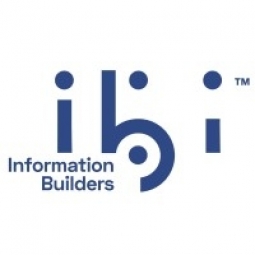
|
Case Paper Achieves “One-Click” Analytics with WebFOCUS
Case Paper, a paper converter and merchant serving the printing and packaging industry, was facing challenges in accessing and utilizing data from IBM System i systems and other sources. The company needed better analytic capabilities for its entrepreneurial operating system management methodology. The company was relying heavily on Excel to get valuable information out of these systems. This process became even more cumbersome once newer versions of Excel were introduced, discontinuing many of the reporting features employees were utilizing. It would take developers as long as six months to merge the needed data from various IBM System i databases and create reports. Running those reports tied systems up for as long as an hour, preventing staff from efficiently processing transactions or entering data.
|
|
|

|
Propelling Corporate Performance Gains at Lockheed Martin
Lockheed Martin Missiles and Fire Control Company, a leading developer and manufacturer of advanced missile, rocket, and space systems, faced a challenge of providing users of a variety of diverse information systems with a standard, self-service way to obtain financial and operational data. The company had various types of software applications, and many different reporting systems had evolved over time. The company attempted to achieve consistent reporting standards throughout the enterprise with a third-party client/server reporting application, but with limited success. The user interface was not satisfactory, the output from the application was not up to the mark, and the licensing costs associated with moving it to the Web were prohibitive.
|
|
|

|
HJ Machine and Pattern - E2 SHOP Provides Great Training and Connectivity
HJ Machine and Pattern, a machine shop that provides solutions for complex problems, was in need of an update. The company's phone system and computer design had not been updated for a few years. When Gurjinder Jammu took over as President and CEO, he decided to modernize the company's operations, including its ERP software. The company considered several ERP software options before settling on E2 in 2017. The decision was based on the simplicity of E2 and its efficient information flow. However, in mid-2020, the company decided to upgrade to E2 SHOP on the cloud.
|
|
|

|
Shoptech Provides Excellent Virtual Training
Stainless Metals, a custom fabrication shop, was facing challenges in tracking jobs on the shop floor and estimating jobs. They occasionally lost track of a job, and they lacked an efficient system for estimating jobs. They decided to implement E2 SHOP on the cloud to address these issues. However, the COVID-19 pandemic hit shortly after they got E2 SHOP in March 2020, which delayed their plans.
|
|
|
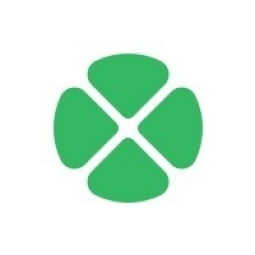
|
Extending a Data Warehouse, Building a Relationship for the Future
BTC Solutions, a UK-based company, was facing a demand for increased performance of their autoVHC platform due to growing amounts of data and rising customer expectations for a quicker turnaround. Dealers were having difficulties accessing fresh data, leading BTC to search for an ETL tool that could handle fast-changing data. BTC had three main requirements for the data warehouse solution: Data History, Robustness, and Flexibility. The new data warehouse needed to keep track of changes and record all modifications done to the database. It also needed to be able to handle ten times more data than their current database. Lastly, the solution needed to be user-friendly, so that BTC could define and modify the transformation procedures.
|
|
|

|
Accelerate: HD Broadcast
Fox Network’s Engineering & Operations team was tasked with designing a file-based workflow solution for SPEED, specifically addressing the requirements to move from SD to HD content throughout the process, ingesting content directly into the Storage Area Network (SAN), creating low-res copies for easy editing, production and advanced editing, supporting Dalet transfers to and from video servers – while enabling 75 concurrent Dalet users to go about their everyday tasks, from logging content to rundown preparation. The team quickly began to leverage their experience from other, similar, projects and turned to high performance DDN® storage and Dalet for the key workflow components. The biggest challenge was timing – only a few weeks after signing the PO the entire system had to be on air in a brand new, purpose-built, 55,000 square foot facility.
|
|
|

|
ACCELERATE: LIFE SCIENCES - Institute for Computational Biomedicine at Weill Cornell Medical College Implements Scalable Solution for Genomics and Epigenomics Research
The Institute for Computational Biomedicine (ICB) at Weill Cornell Medical College was facing a challenge as they expanded their neuroscience, epigenomics, proteomics imaging facilities and brought online more genetic sequencers. Their legacy methodology of organically adding autonomous storage pools was no longer capable of meeting the computational needs of the researchers. The challenge was transitioning from their legacy method of adding a single dedicated RAID array (at a time), into something that was scalable and could meet their storage needs for years to come. As the data ingest rates continued to raise, the facility needed to look into a more robust, scalable and sustainable storage approach.
|
|
|

|
Accelerate: Media & Entertainment
MLB Network, a 24/7 TV network for baseball fans, was facing challenges in managing its vast baseball video archive. The network required a high-performance disk cache to support tape migration for the archive while accommodating 7,000 hours of new content ingested weekly. They also needed to simplify complex, concurrent workflows to ensure seamless support for up to 40 post-production jobs concurrently. The network was also looking for a technology that could suit the needs of two sports TV networks. The immediate challenge was moving LTO-4 content into a disk cache and then rewriting that content onto T10KD tapes, while simultaneously recording and archiving new footage onto the T10KD platform.
|
|
|

|
Streaming Live Experiences to Millions, with Confidence
Seven.One Entertainment Group, a leading player in Germany's multi-channel entertainment industry, was facing a highly competitive market with rapidly changing viewer habits. Users were moving away from traditional TV and towards video-on-demand and interactive, second-screen experiences. The company needed to execute with the agility that only DevOps practices could provide. However, the lack of a single monitoring tool that provided visibility over the entire application and enabled engineers to trace requests across services was hindering their DevOps mindset. Each team used its own monitoring solution, so no tool provided visibility over the whole application or enabled engineers to trace requests across services. This lack of adequate monitoring also made it challenging for Seven.One Entertainment Group to deliver live interactive shows, which draw up to 10 million simultaneous viewers online.
|
|




